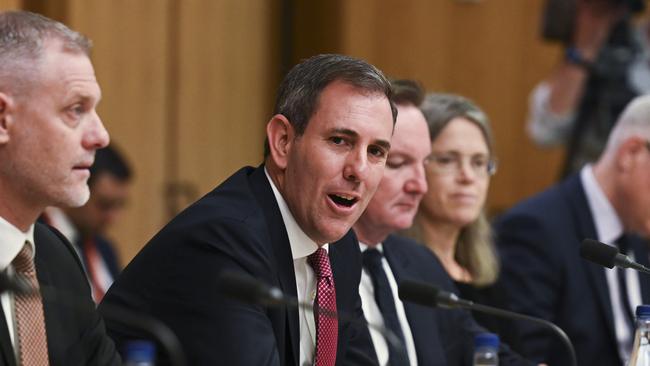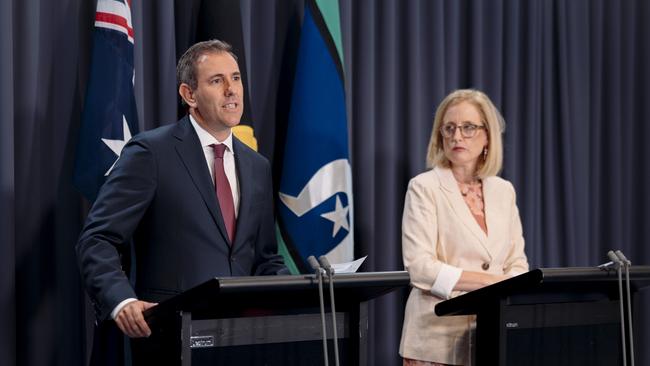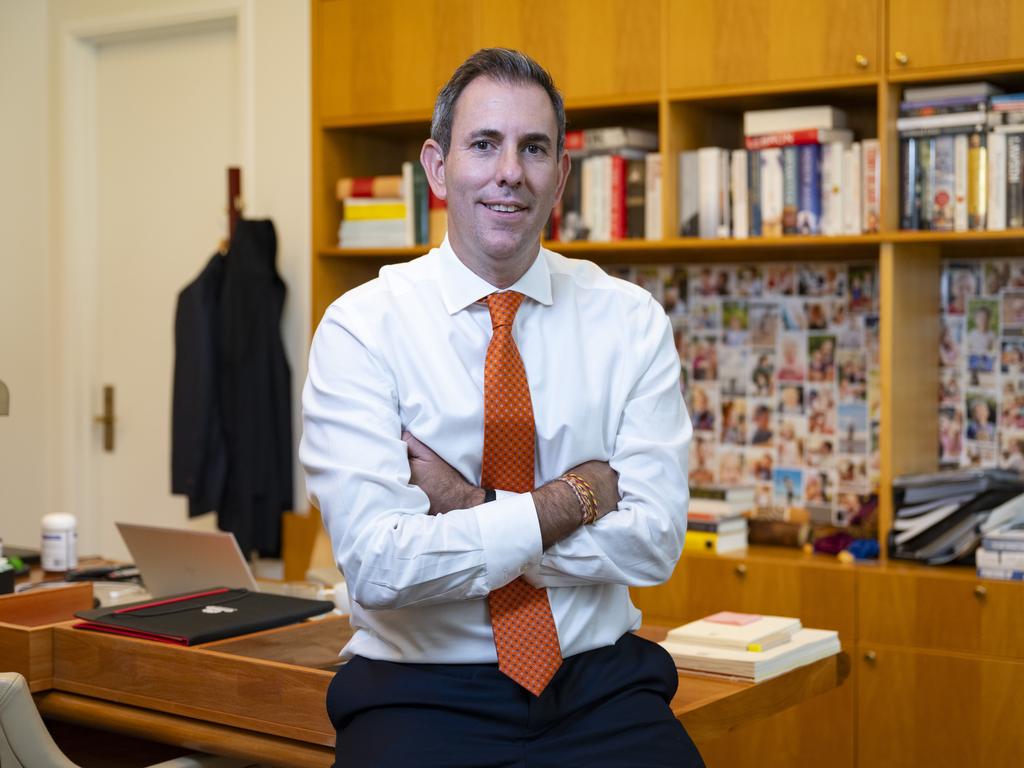Jim Chalmers misses the mark on spending restraint


So it’s fine for Jim Chalmers to declare “responsible economic management is the government’s defining feature”, but simply saying this doesn’t make it so.
The Treasurer has had considerable luck during his tenure as our top money man. Ongoing elevated commodity prices as well as the combination of a tight labour market and bracket creep have meant surging tax revenue.
The elimination of the low and middle income tax offset – the so-called lamington – this year has meant an additional $8bn in revenue across the forward estimates. In the September quarter alone, income tax paid by households rose by 8 per cent, according to the national accounts.
What Chalmers doesn’t seem to appreciate is that an improving bottom line is one thing; it’s how this improvement is achieved that is more important when assessing the economic impact and the implications for future budget management.
Ultimately, there is no substitute for determined spending restraint as exhibited all those years ago by treasurers Paul Keating and Peter Costello. This is made more critical in the current context of inflation and the need for the government to contribute to fighting inflation rather than fuelling the flames.
The figures presented in this year’s mid-year economic and fiscal outlook point to ongoing lavish government spending. Before Covid, government spending was less than $500bn, which was 24.5 per cent of gross domestic product. This financial year, government spending will be about $686bn or 25.7 per cent of GDP. In the next two financial years, government spending is expected to rise even more, to 26 per cent and 26.1 per cent of GDP, respectively.
What is absolutely clear is that this government has no stomach for cutting government spending. Indeed even reducing the rate of growth of spending in key areas has proven difficult as interest groups lobby for more funds to be directed at their preferred areas. Watch this space in respect of school funding as the Australian Education Union seeks to increase federal government spending even more on the basis of the dubious Schooling Resource Standard.
Note also the decisions taken at the recent national cabinet meeting ended up as a pea-and-thimble budget trick, with some spending taken from the National Disability Insurance Scheme but put into joint spending on so-called foundational supports (with the federal government on the hook for any cost overruns) and more health spending. Moving something from column A to column B doesn’t alter the budget implications, just the labelling. It remains to be seen whether growth in real expenditure on the NDIS can be reduced short of rethinking eligibility and benchmarking plans.

The budget surplus that will likely be achieved this financial year – a balance is predicted in the MYEFO – will be almost entirely due to the revenue side of the budget, with a small amount of deferred infrastructure spending also making a contribution. (These projects should never have been in the budget in the first place, so to call their deletion a saving is a bit of a stretch.)
The stark reality is that iron ore, coal and liquefied natural gas remain key pillars of our budget position. Those who seek to crimp the resources sector do so at the peril of achieving the budget outcomes that allow for substantial spending on social policies. Apparently this is not a message that has reached Climate Change and Energy Minister Chris Bowen as he tries to convince the world to phase out fossil fuels.
Chalmers may pat himself on the back for resisting the temptation to implement even more cost-of-living measures with this statement. But spending is actually higher than in the May budget and the potential impact on inflation of any measures means the risk is not worth taking, notwithstanding some political benefits.
If we look at the longer term through to 2033-34, the government is anticipating the budget surpluses to be short-lived. From 2024-25 the forecast is that budget deficits will be recorded in every year, with the fastest growing payments being for the NDIS at just over 10 per cent a year and net interest payments on government debt, now expected to grow by close to 12 per cent per year.
What the MYEFO demonstrates above all is that federal government spending has jumped to a new plateau and without very concerted action it will remain at this higher level. Spending on aged care, medical benefits, defence, hospitals as well as the NDIS and interest almost guarantee this to be the case.
The real threat is a future shock that leads to a significant reduction in revenue.
It may be tempting to wait until that point, but if Chalmers really wants to earn top marks as a responsible economic manager he needs to act now.






The trouble with marking your own homework is that no one believes the mark.